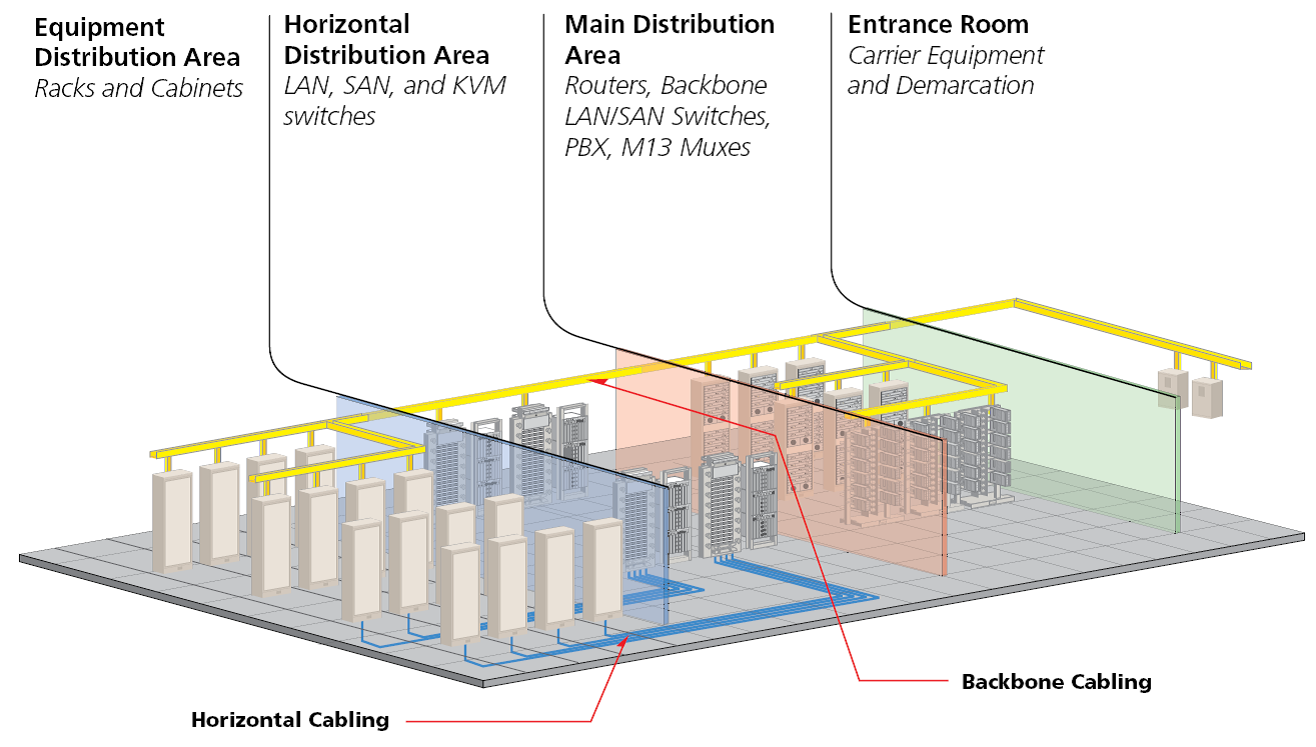Structured Cabling Design for Data Centers
In today’s fast-paced world, change is the only constant, and nowhere is this more evident than in the enterprise IT arena. The evolving nature of technology makes it mandatory for organizations to review and replace data center network cabling in order to cope with constantly growing business needs.
Data center network cabling is the backbone that supports your business needs. For appropriate data center network cabling, there are myriad designs and solutions to choose from. Field termination has been widely used during the deployment of data center in the past years. However, with the data center increasingly depending on high-density cabling, traditional field termination methods will result in extended deployment time, higher installation costs and increased downtime. To solve these issues, pre-terminated cabling system, which can accelerate the installation process, reduce costs and errors, is introduced to the data center structured cabling system.
Use these tips to determine what’s best suited to your data center.
What’s Data Center Structured Cabling?
Data center structured cabling is a telecommunications cabling infrastructure consists of a number of standardized smaller elements. According to TIA-942 standard, a data center structured cabling system always includes five key functional subsystems:
- Entrance Room (ER)
- Main Distribution Area (MDA)
- Horizontal Distribution Area (HDA)
- Zone Distribution Area (ZDA)
- Equipment Distribution Area (EDA)
The entrance room(ER) as the name indicates, this is the interface between the ISP/telecommunication provider and the data center structured cabling. It houses the demarcation hardware and is outside of the MMR room for security purposes.
Main distribution area(MDA) holds the main cross-connect, which is the hub of the cabling system and may be located in the MMR Room. The MDA includes the cross connect and may include the horizontal cross-connects if the equipment they serve is nearby. The MDA may hold the core routers and the core LAN/SAN switches.
The horizontal distribution area(HDA) is the space where the horizontal cross-connect resides. The HDA is the main transition point between backbone and horizontal cabling and houses the LAN, SAN and KVM switches that connect to the active equipment (servers, mainframes, storage devices). In a colocation data center, it’s been observed that the meet-me-room facility will accommodate all of these 3 areas such as entrance room(ER), Main distribution area(MDA) and horizontal distribution(HAD) areas.
Zone Distribution Area (ZDA) is the consolidation point for all the data center network cabling and switches. The zone distribution area(ZDA) is used in large computer rooms that need additional configuration flexibility between the HDA and equipment. The ZDA houses only passive equipment.
Equipment Distribution Area (EDA) is main server area where the racks and cabinets are located.
As a quick view of this structured cabling design, from the point where your network enters the facility(ER) and termination up to your equipments(EDA) route can be as below,
Entrance Room > MDA > HDA > ZDA > EDA

Generally, there are two types of cabling design for connecting the above mentioned systems: backbone cabling and horizontal cabling. Horizontal cabling supports mechanical termination, patch cord and horizontal cross-connect to the HDA, which may connect either to the ZDA or the EDA. Horizontal cabling can be fiber, copper or a mix of both. Backbone cabling on the other hand simplifies the design of the data center network cabling as it supports patch cord, mechanical termination and main cross-connects to various areas of the data center. This helps in better management. However, backbone cabling may face challenges in a distributed data center topology that supports multiple entrances.
A third possible design is zone cabling. With this approach you could have a consolidation area for all connections in the data center. You could either connect blocks or patch panels. The problem with this approach is that it may lead to a higher amount of moves, additions and changes, thus increasing costs. It is also difficult to design data center network cabling in the cross-connector channel with this approach.
Additional Note,
Media selection -the devil, they say, is in the detail, and this applies to data center network cabling too. It is necessary that you review the type of cable required – copper, multimode fiber optic or single mode optical cable. Also evaluate the terminators that are required for each connection. As the hardware requirements of the data center increase, power and cooling requirements may rise. It is important that you consider and review these elements to avoid issues.
Most cabling solutions used on these days are pre-terminated fiber/copper(Pre-terminated cable provides a plug-and-play solution for links between switches, and servers in the data center. These solutions often include MTP trunk cables, fiber patch cables, and Pre-terminated copper trunk cable) cabling solutions are ideally suited for data center structured cabling design in MDA, HDA and ZDA areas. Usually, pre-terminated fiber-optic cable assemblies offer high-density small-form-factor cabling-up to 144 fibers per cable and are used as backbone cabling MDA. Pre-terminated copper assemblies are typically comprised of bundles of 6 or 12. They are used in the HDA to connect switch cabinets to server cabinets, and in the ZDA to run from the HDA to zone boxes. Design your pathways keeping maintenance and changes in mind. You should be able to track and address the problems on the fly without impacting your production floor.
Knowledge Credits : www.computerweekly.com
